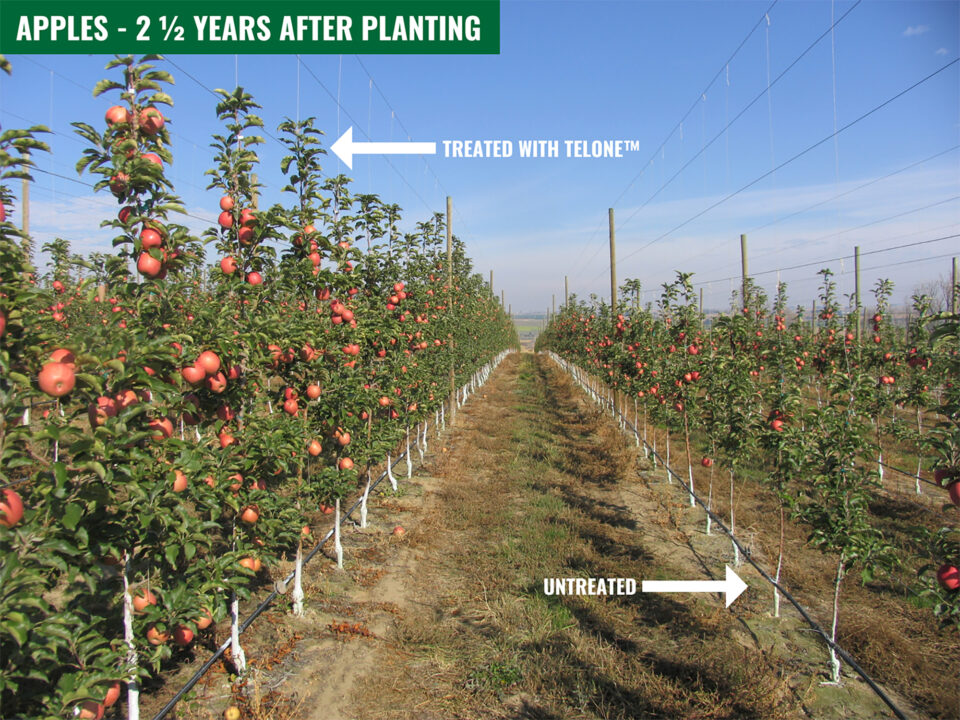It’s Never an Easy Road for Cherry Growers — Here’s Why
A large percentage of cherry growers, both sweet and tart, exited the 2022 growing season concerned but ever hopeful about future campaigns.
And who can blame them, considering increasing incidence of disease and extreme weather?
Disease Issues
In the Pacific Northwest, cherry growers continued to deal with not only the X-disease phytoplasma and little cherry virus 1 and 2 but also deadly frosts and freezes.
“Western X is of huge concern,” a Washington state grower says.
“A large crop (in 2023) will be hard,” a fellow Washington grower adds. “Western X is a huge threat.”
“The disease pressure will continue to rise,” a California grower warns. Why so? As a Washington peer notes, “Virus issues are a huge concern because it’s now been detected in nursery stock.”
Another Washington grower puts a positive spin on the disease issue. “Yes, the little cherry virus is a concern,” he says, “but it also is keeping production volumes ‘in check,’ allowing it to be profitable, unlike the apple industry.”
Weather Issues
One Washington grower lost his crop due to extreme weather that included snow and 23°F temperatures during full bloom.
“Apart from the ever-present diseases, the biggest problem has been the erratic weather patterns and extremes,” a Washington grower says.
Farther south, it is the same story. A late cold snap last year all but “wiped out” an Oregon grower’s cherry crop, particularly the tart production. “I am hoping that the weather is more cooperative this year and that my production of tart cherries will return to at least average,” he says.
“Frost got our last crop,” another Oregon grower says.
In the East, early freezes are the biggest problem, according to a Pennsylvania grower.
“I wish it was as easy as controlling diseases,” a Michigan grower notes.
That said, “we’re very concerned about the diseases,” a Pennsylvania grower says.
Other Issues
Birds are still the No. 1 problem to his cherries,” a New York grower says. A counterpart in California is mostly concerned about the cherry fruit fly. “So far, so good,” he says.
A trio of growers lament the loss of crop protection products. “I’m very concerned with no new products in the pipeline to replace products that have resistance or have been banned,” a Michigan grower says. A peer in Washington is equally discouraged by the loss of more control products. Meanwhile in Oregon, “I’m more concerned with the government limiting what chemicals we can use to solve problems and the cost of their decisions.”
Finally, market conditions worry several growers. “In our area we had frost damage in 2022 that we hope to not have in 2023,” a Utah grower says. “However, there is concern about the market for tart cherries.”
“We hope to see higher prices in 2023,” a Wisconsin grower says. In Michigan, a grower calls it a “sad deal. No market.”
In Virginia, however, local interest in sweet cherries has grown noticeably, a grower says, “perhaps due to an increased desire to produce homemade food products in this area.”
Hardly Any Issues
Fortunately, some growers did thrive in 2022. Others are expecting a bountiful crop this year.
“2022 was a great year for me, but we lost peaches,” a Pennsylvania grow says.
“Cherries in our district did well last year, and we expect them to do similarly well this year,” a Colorado grower says.
“I had a good crop in 2022,” a New York grower says. “I hope 2023 will be as good.”
Already on that path is an excited but cautious Washington grower. “We are expecting a bumper crop based on current bud counts across our ranches,” he says. “But we are always concerned about diseases, particularly the little cherry virus.”










